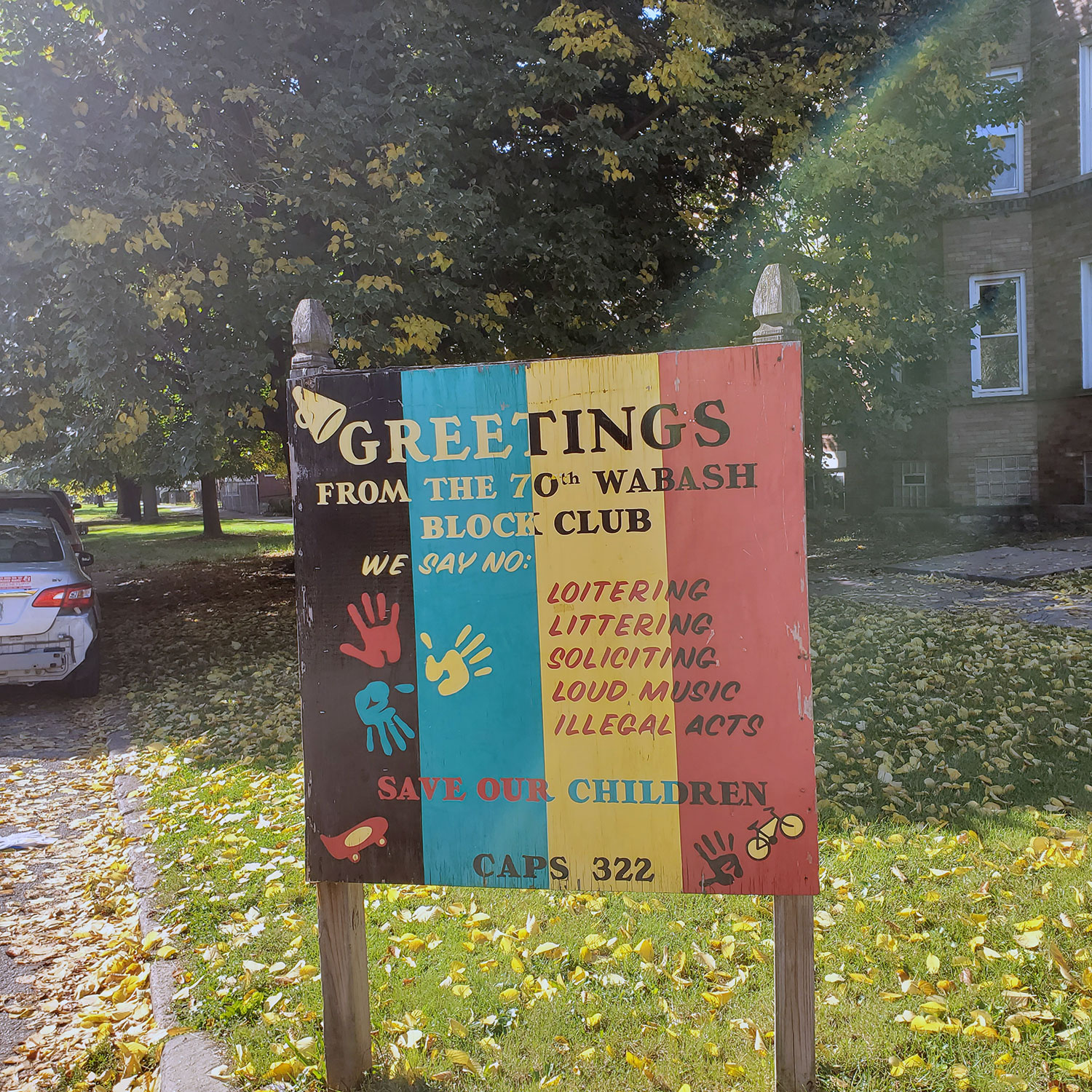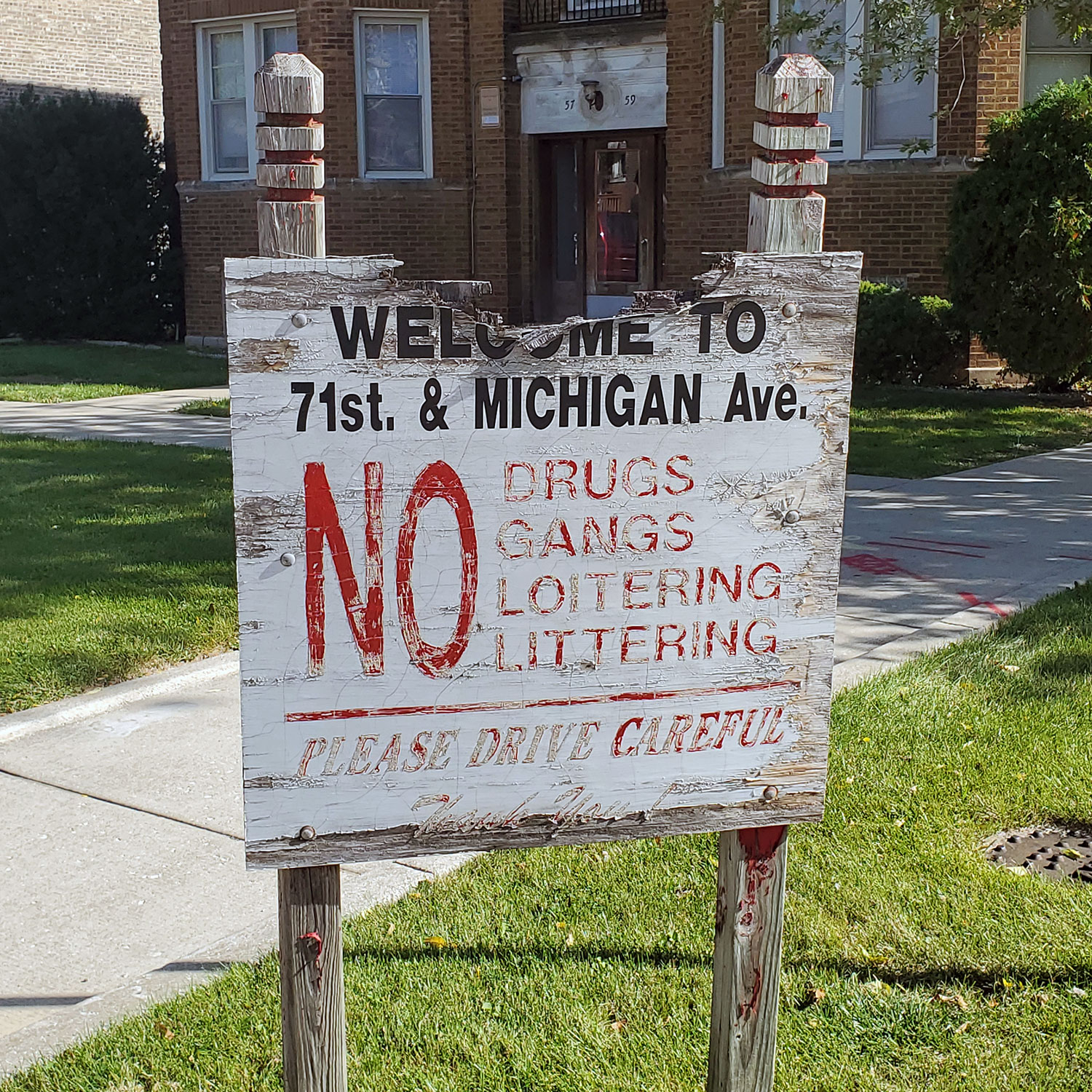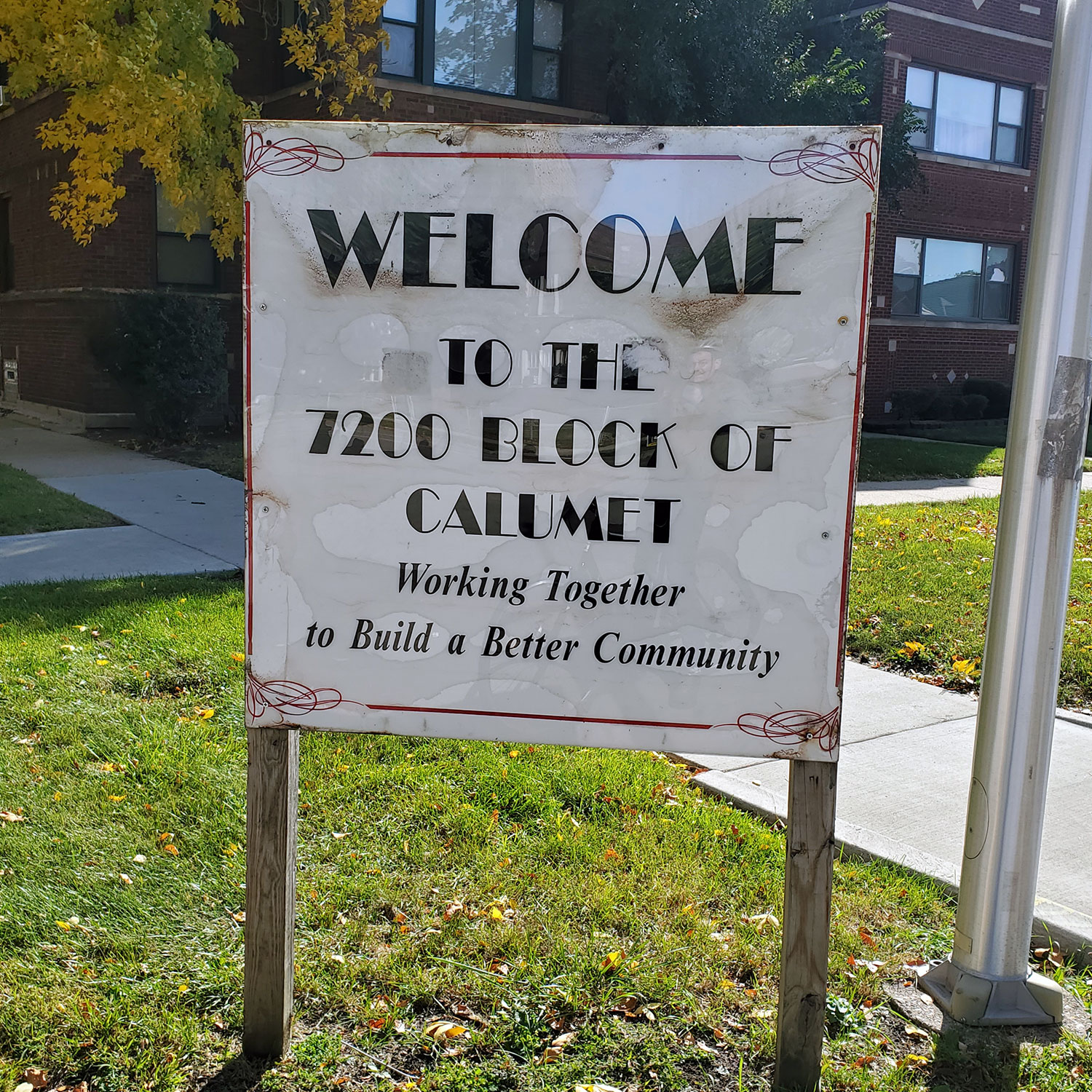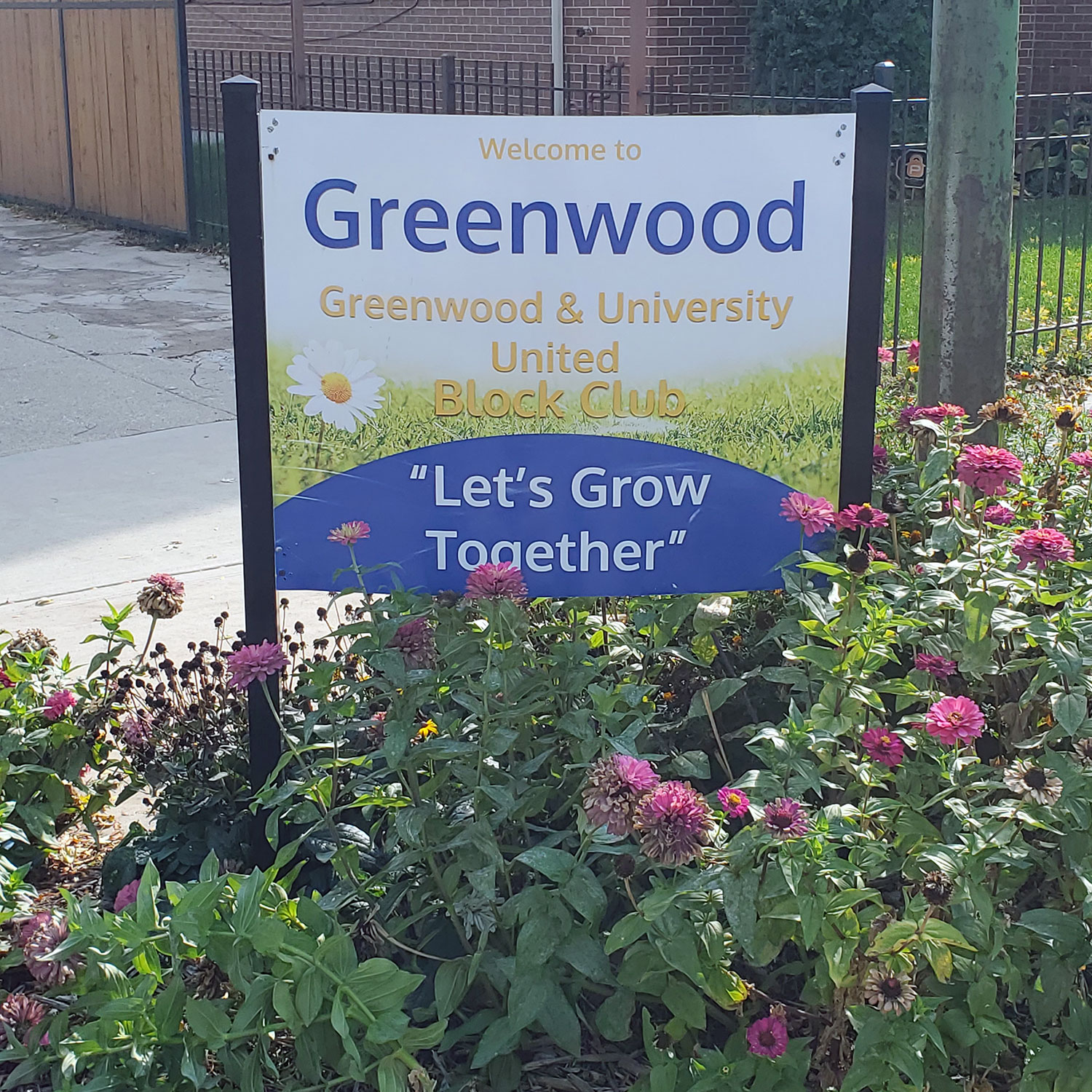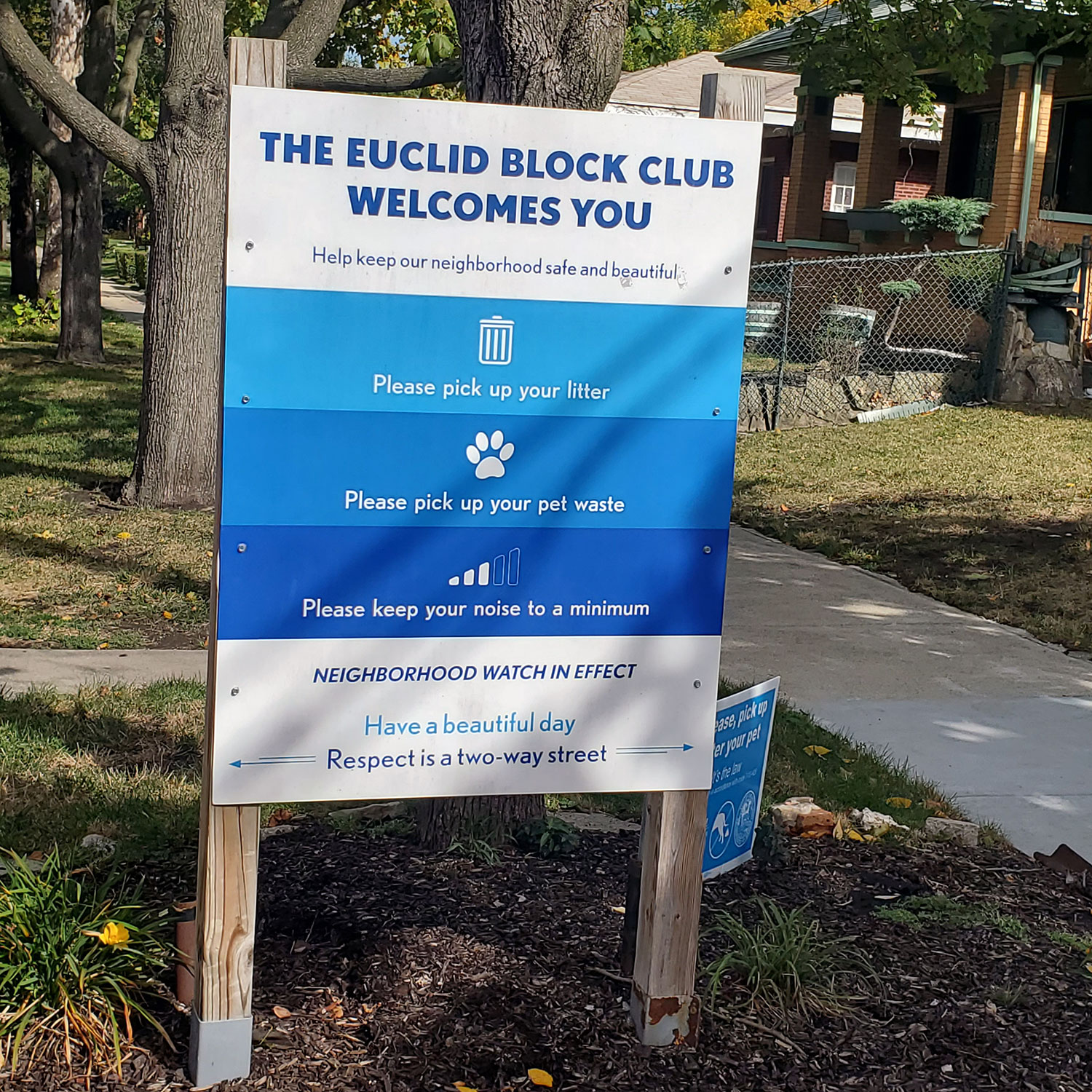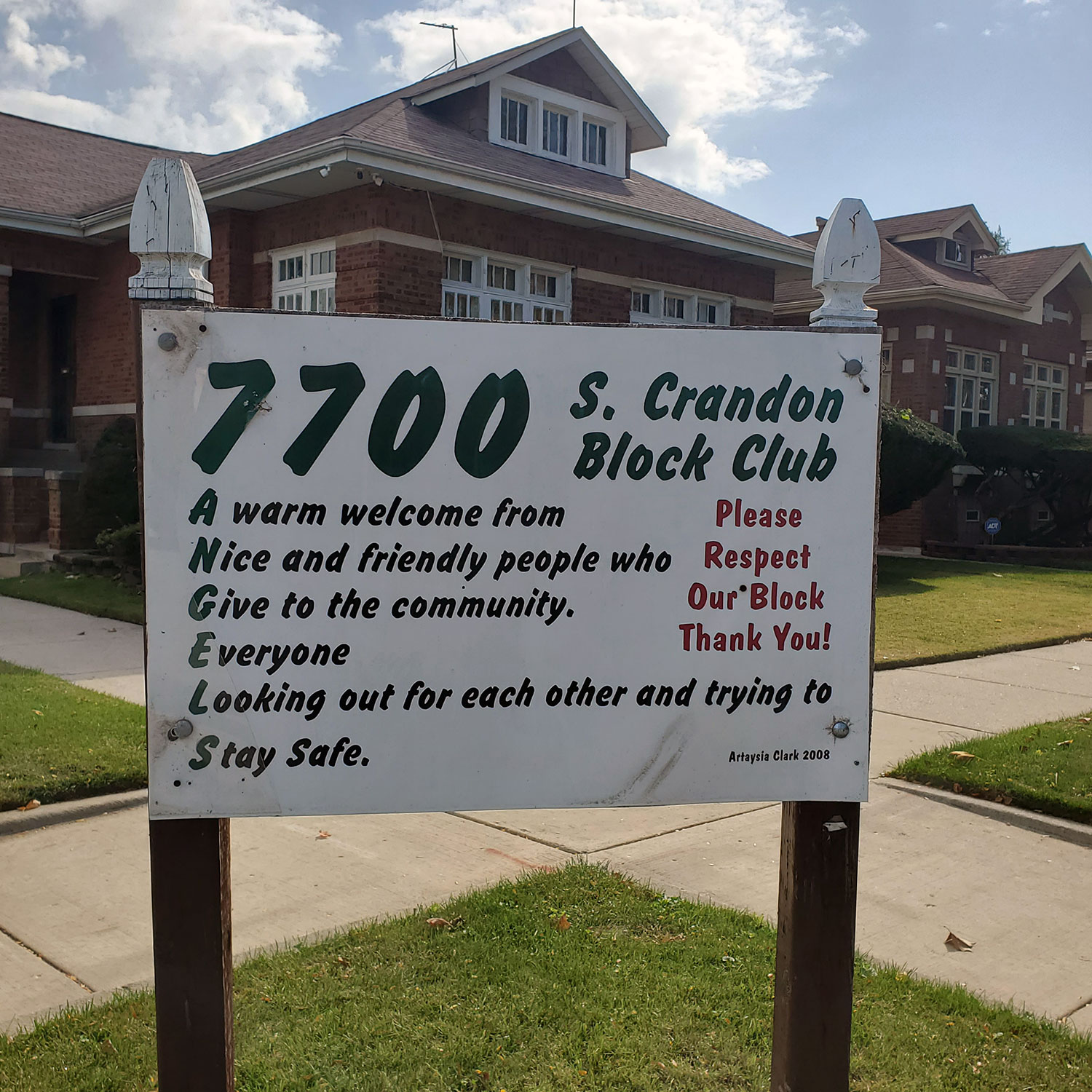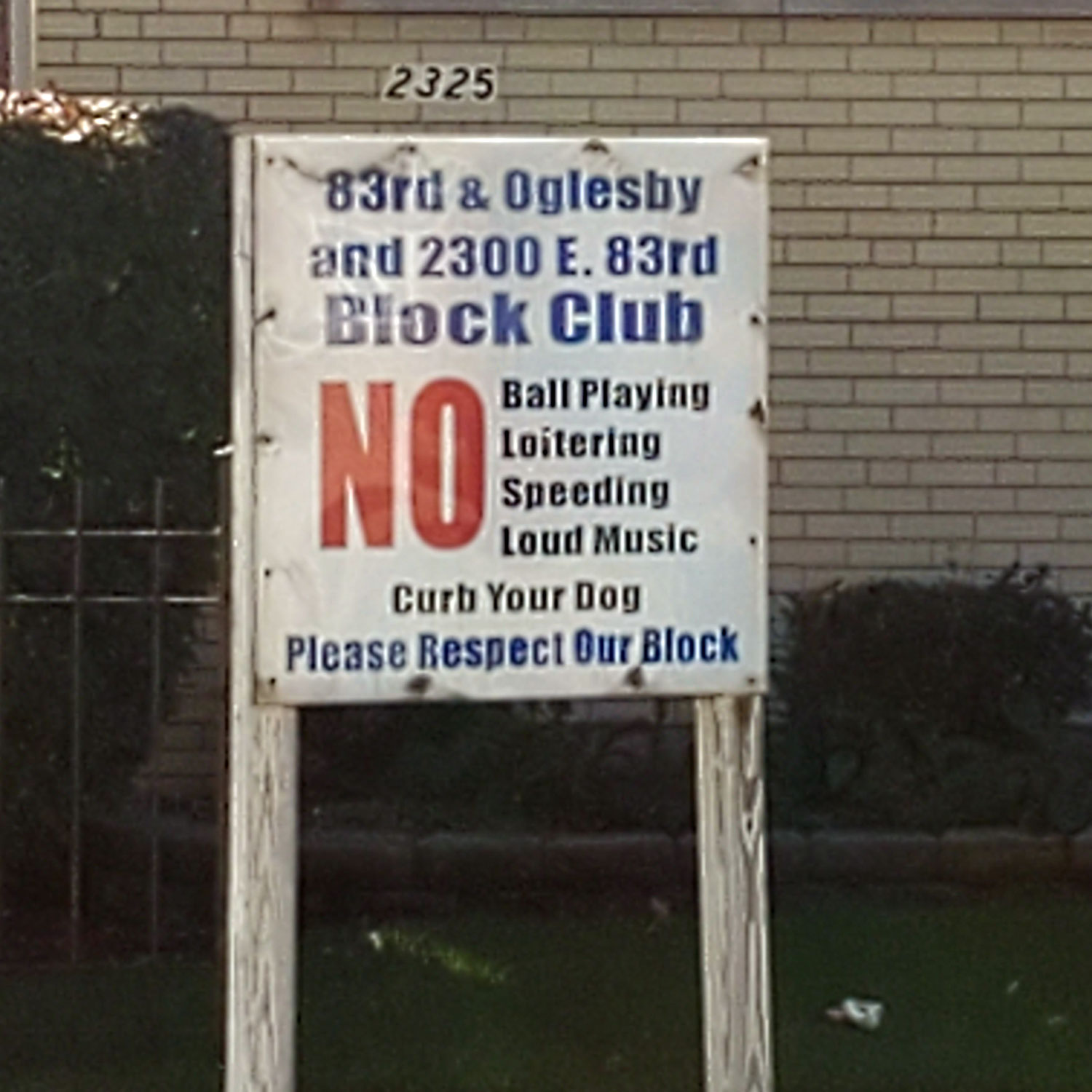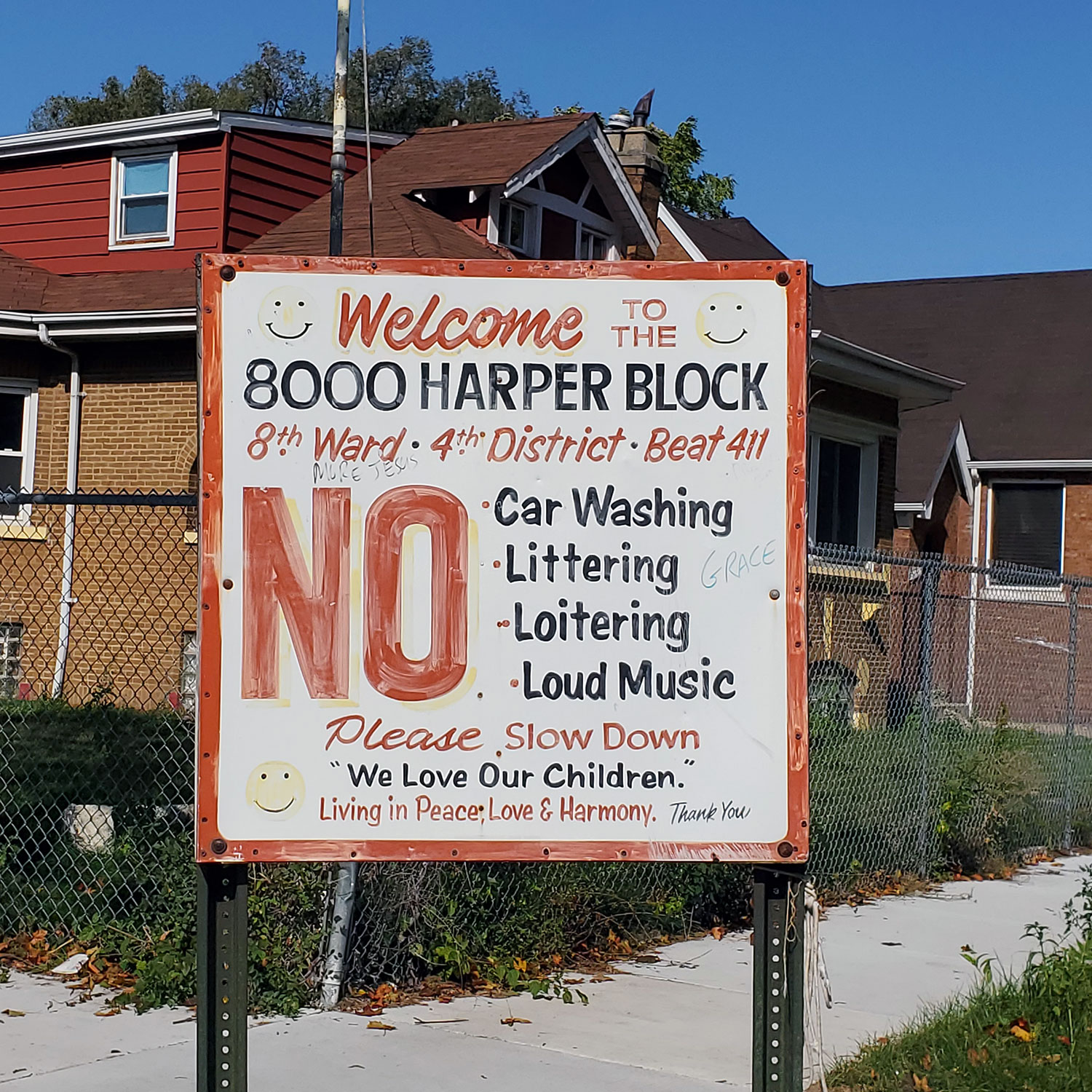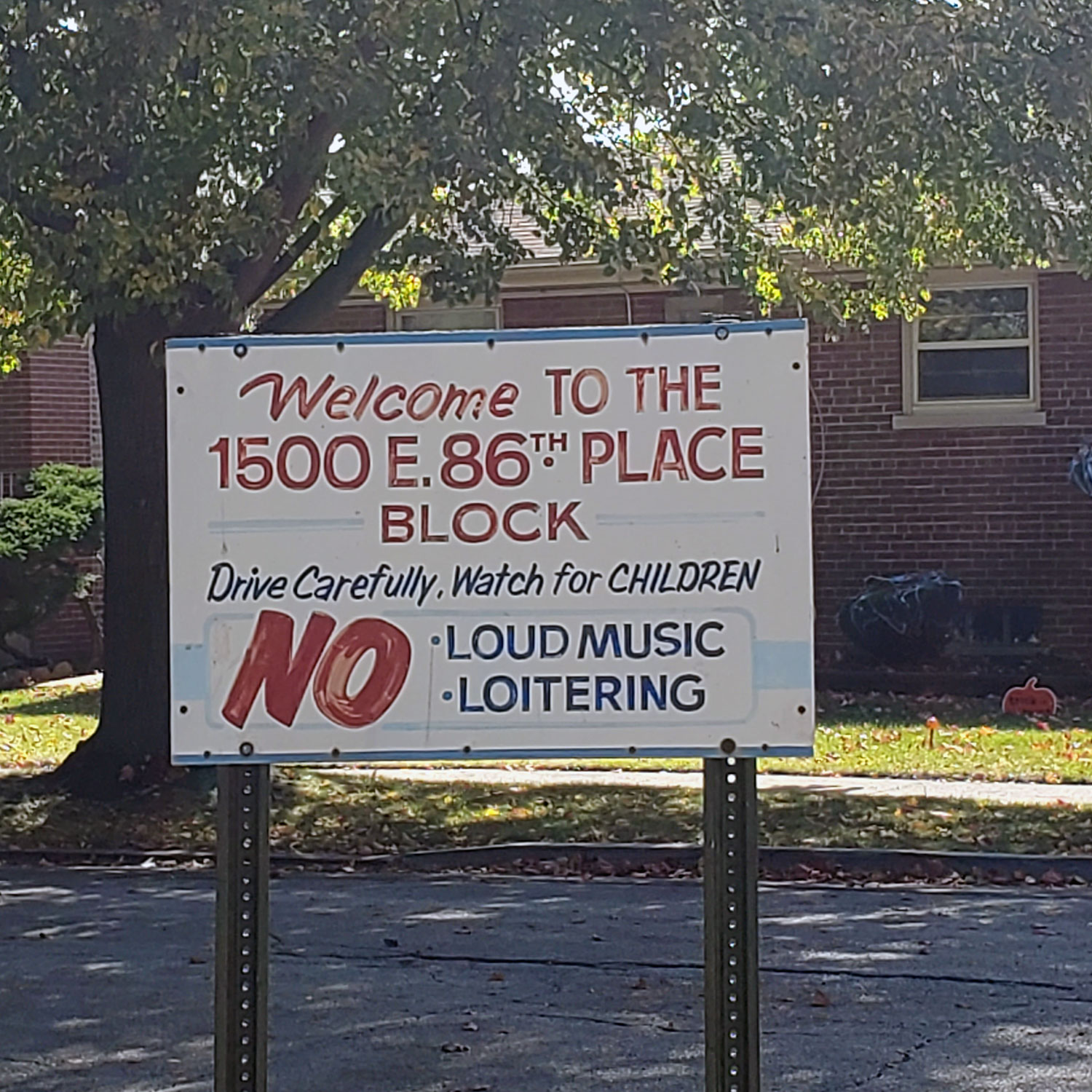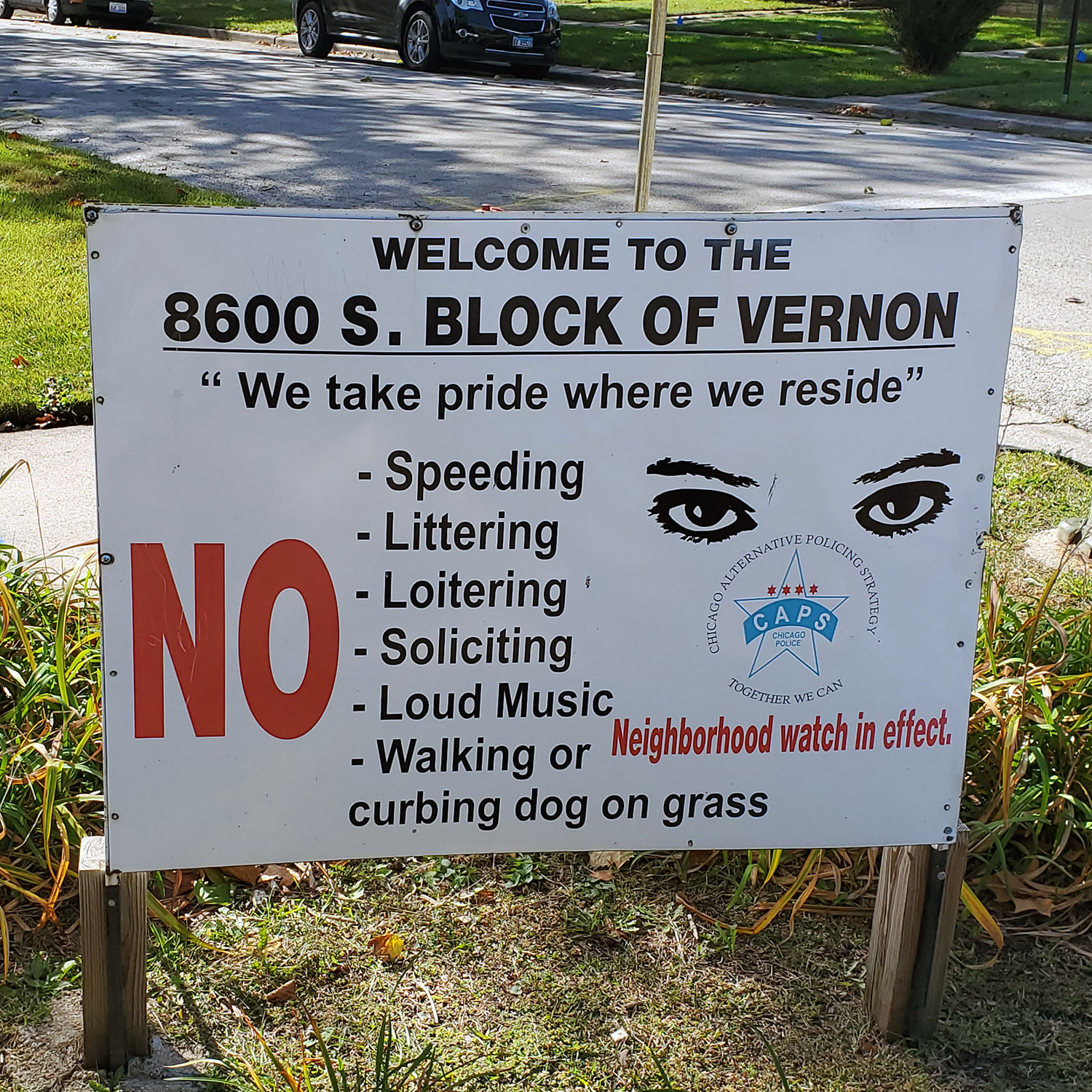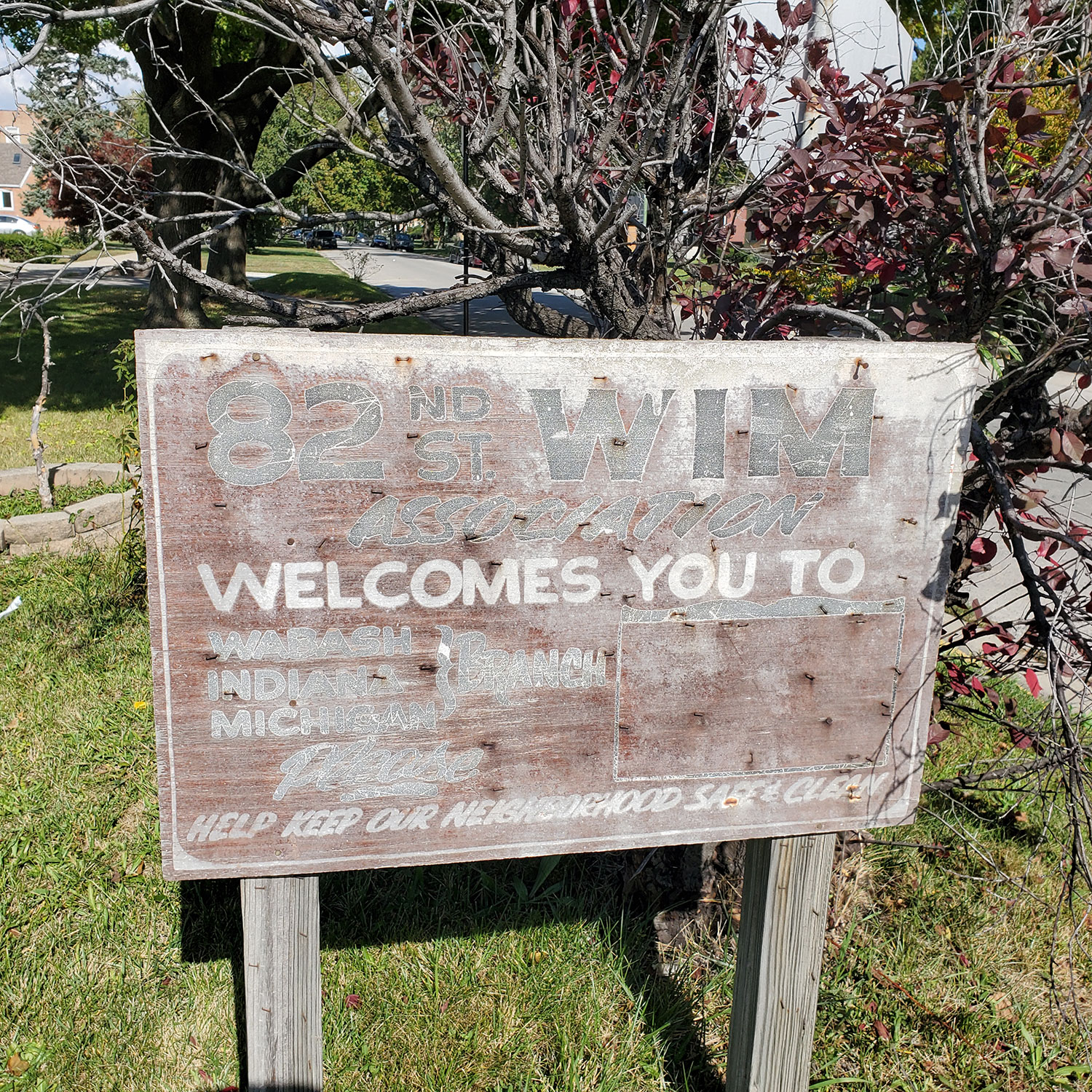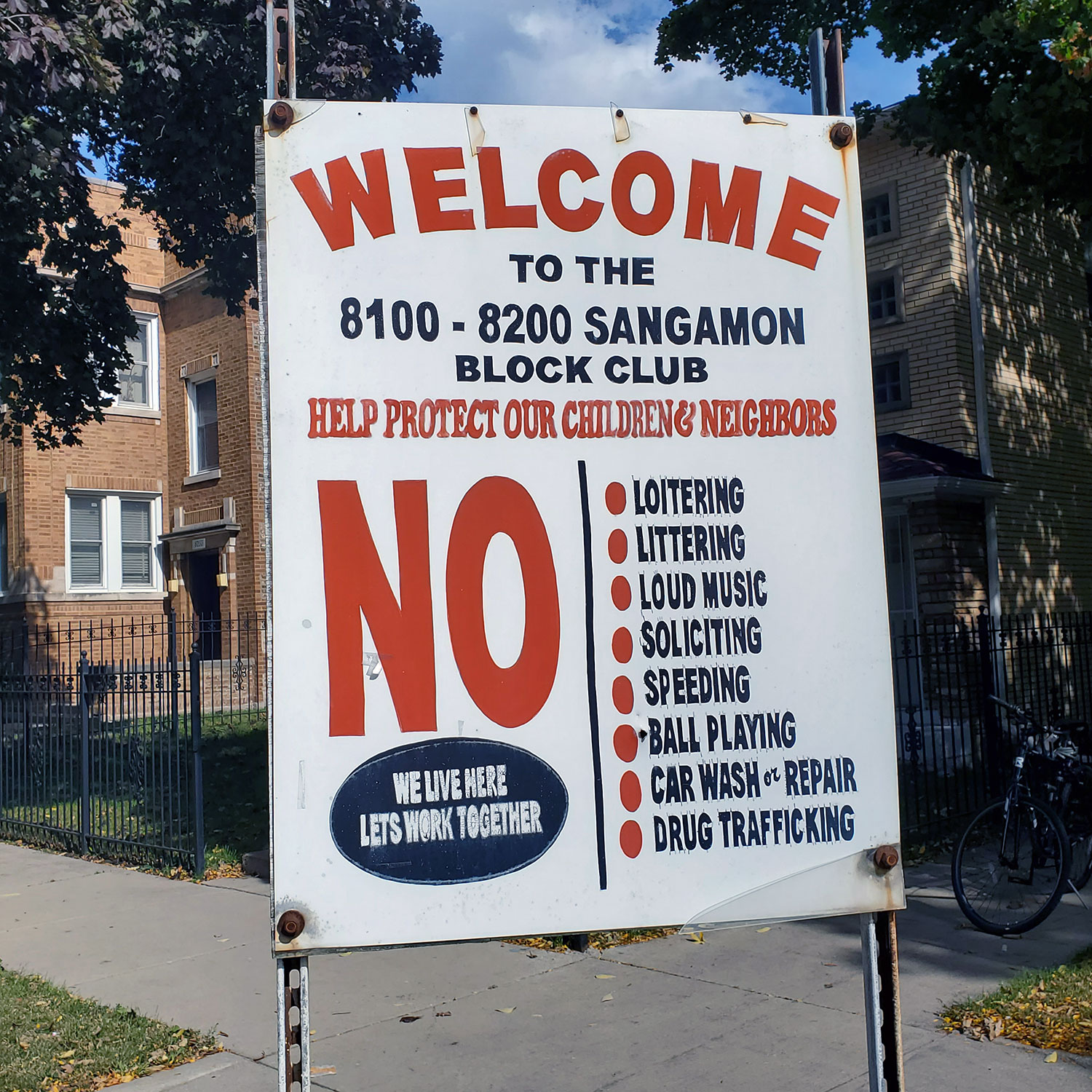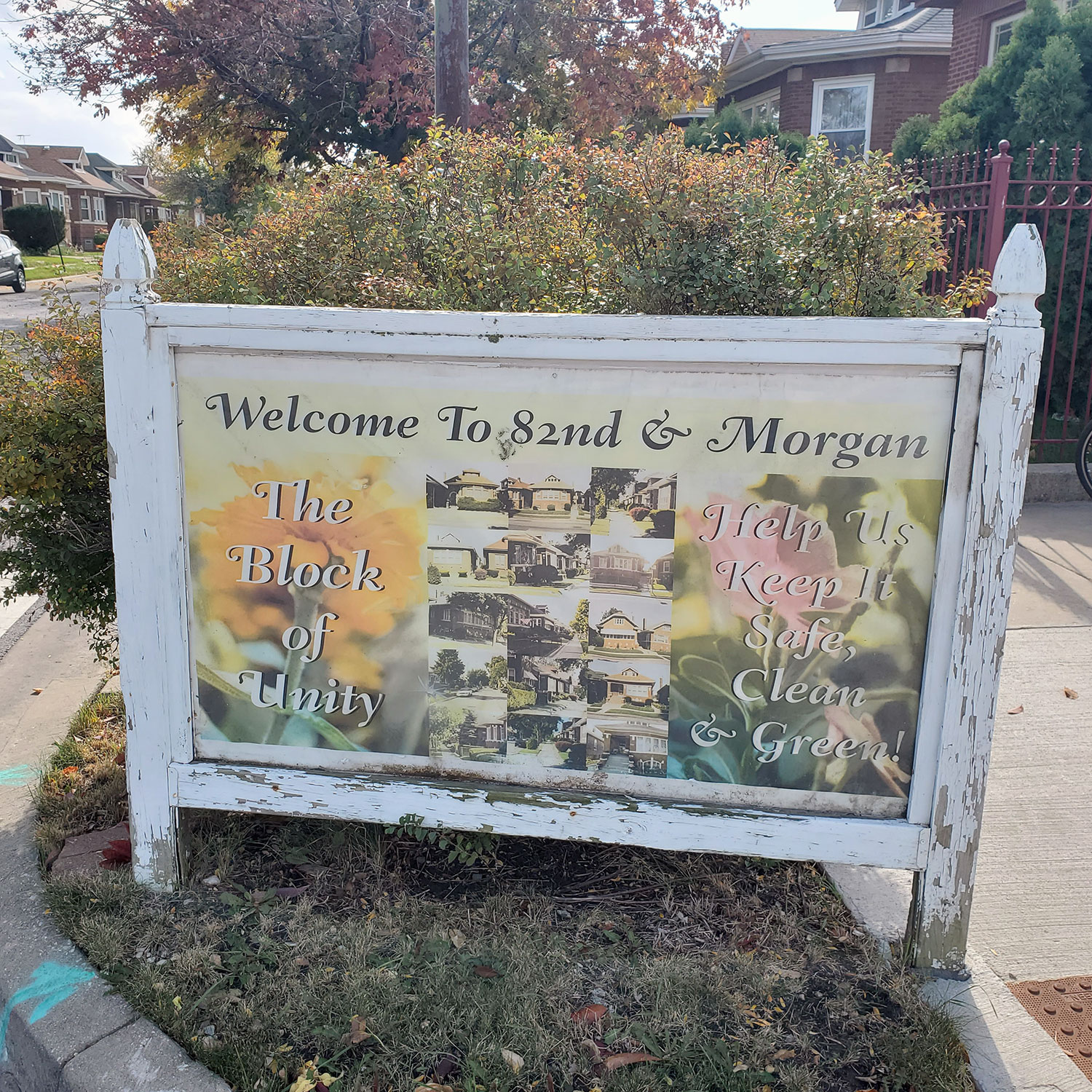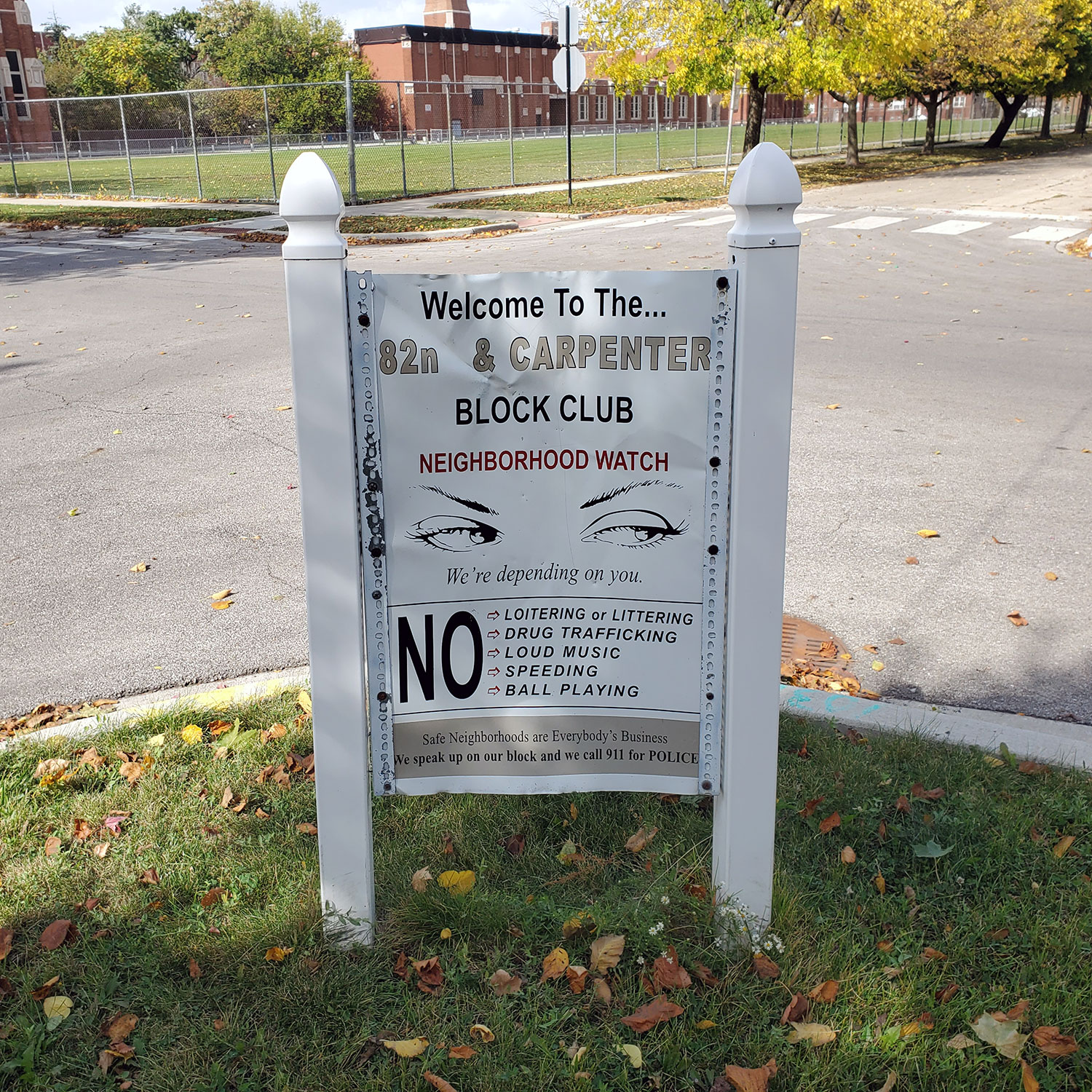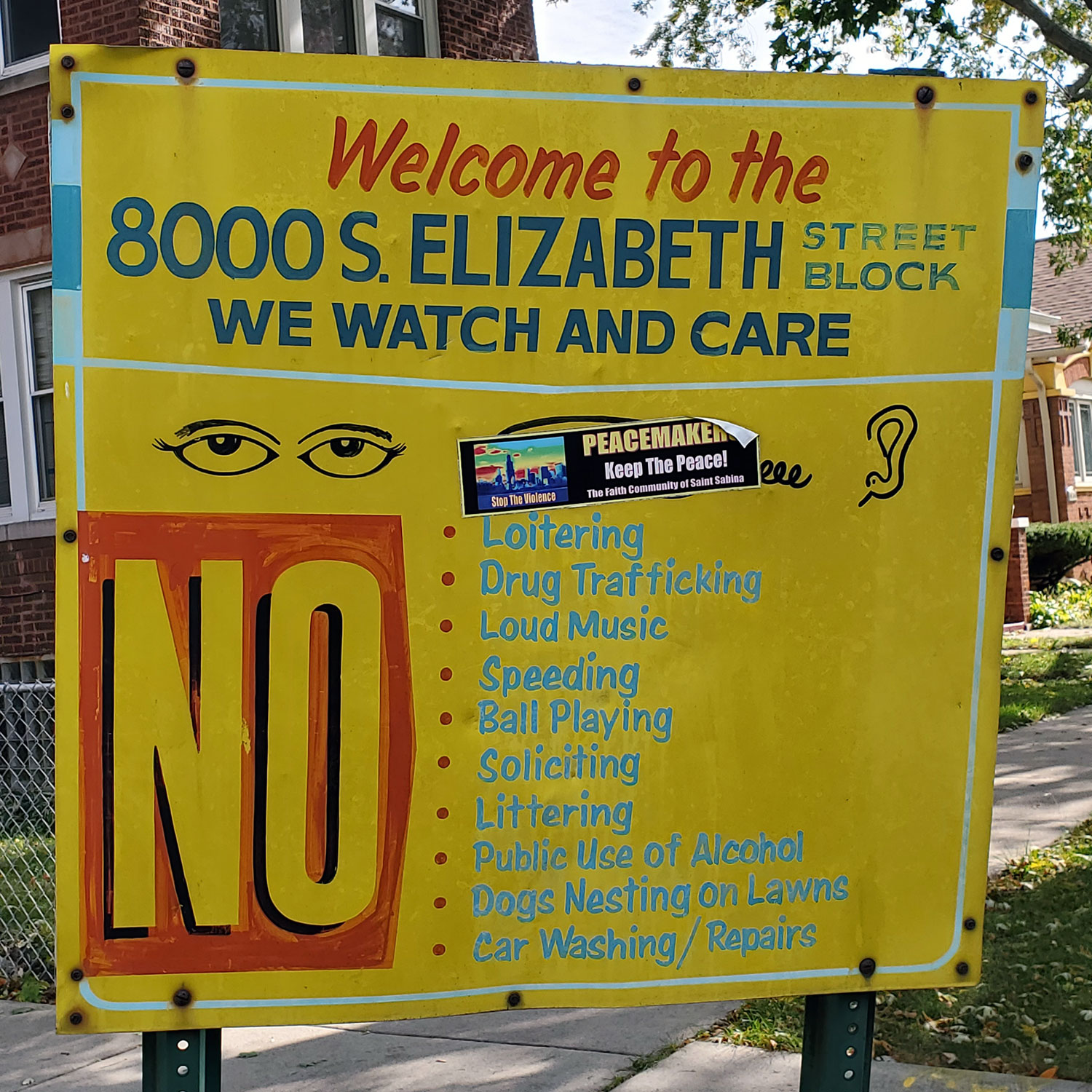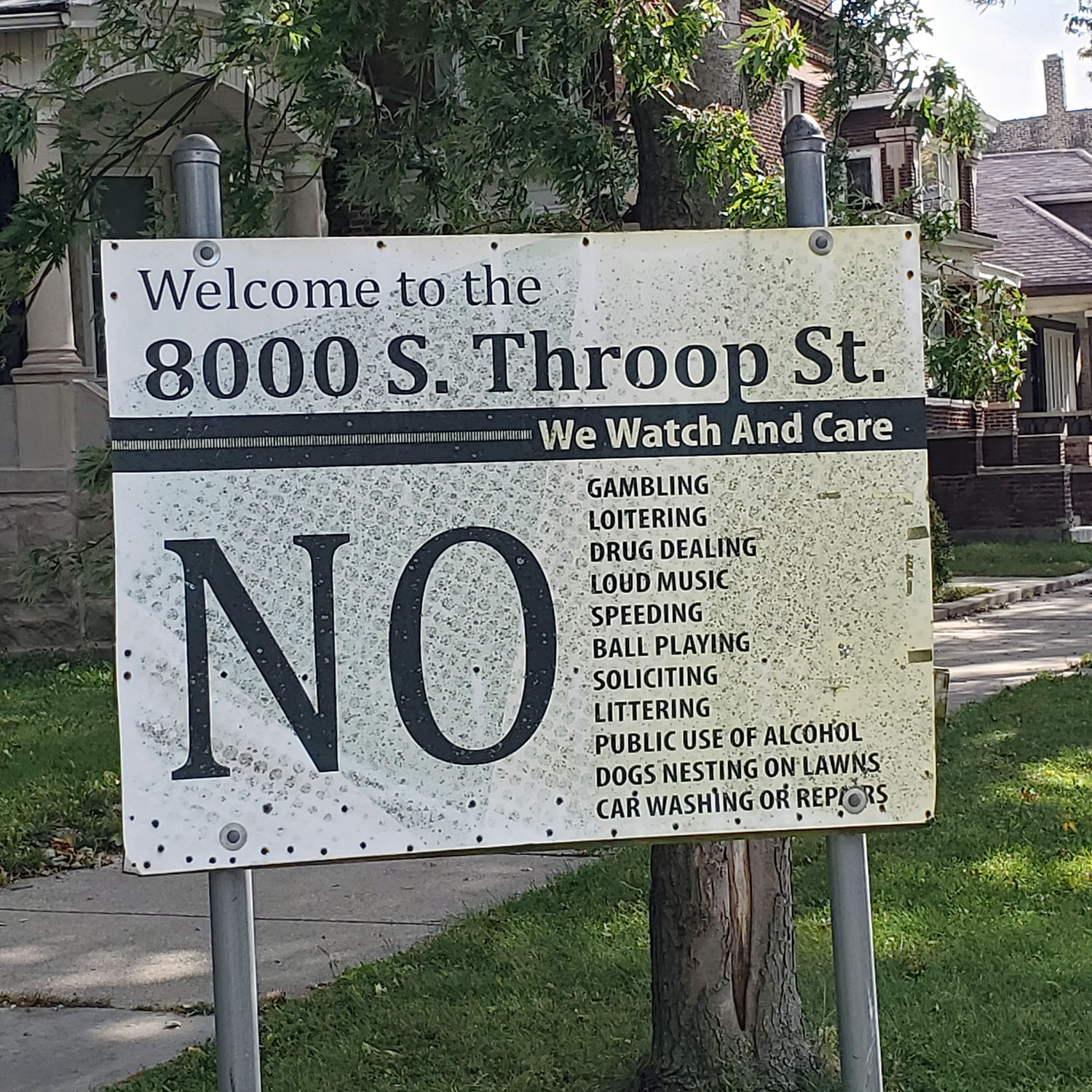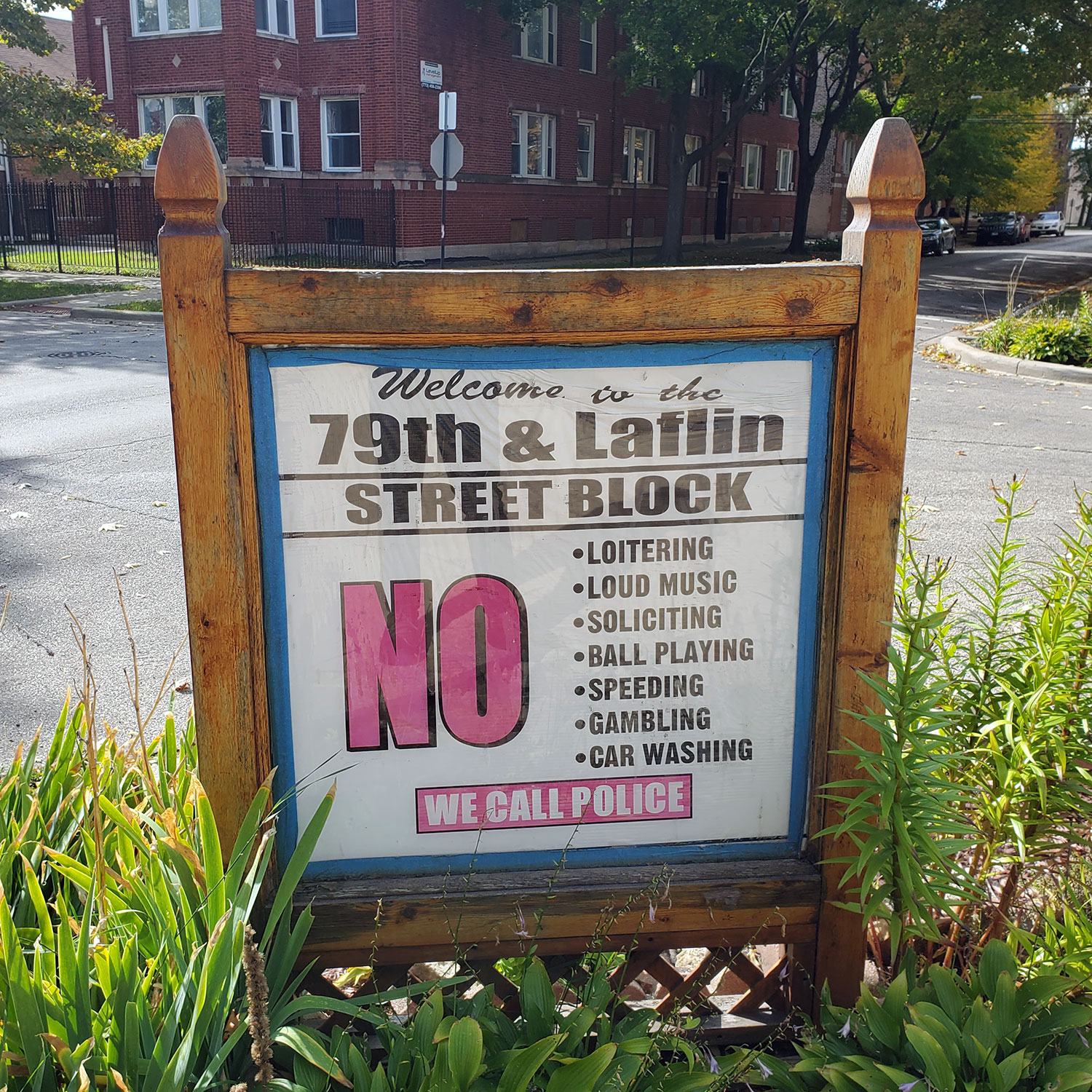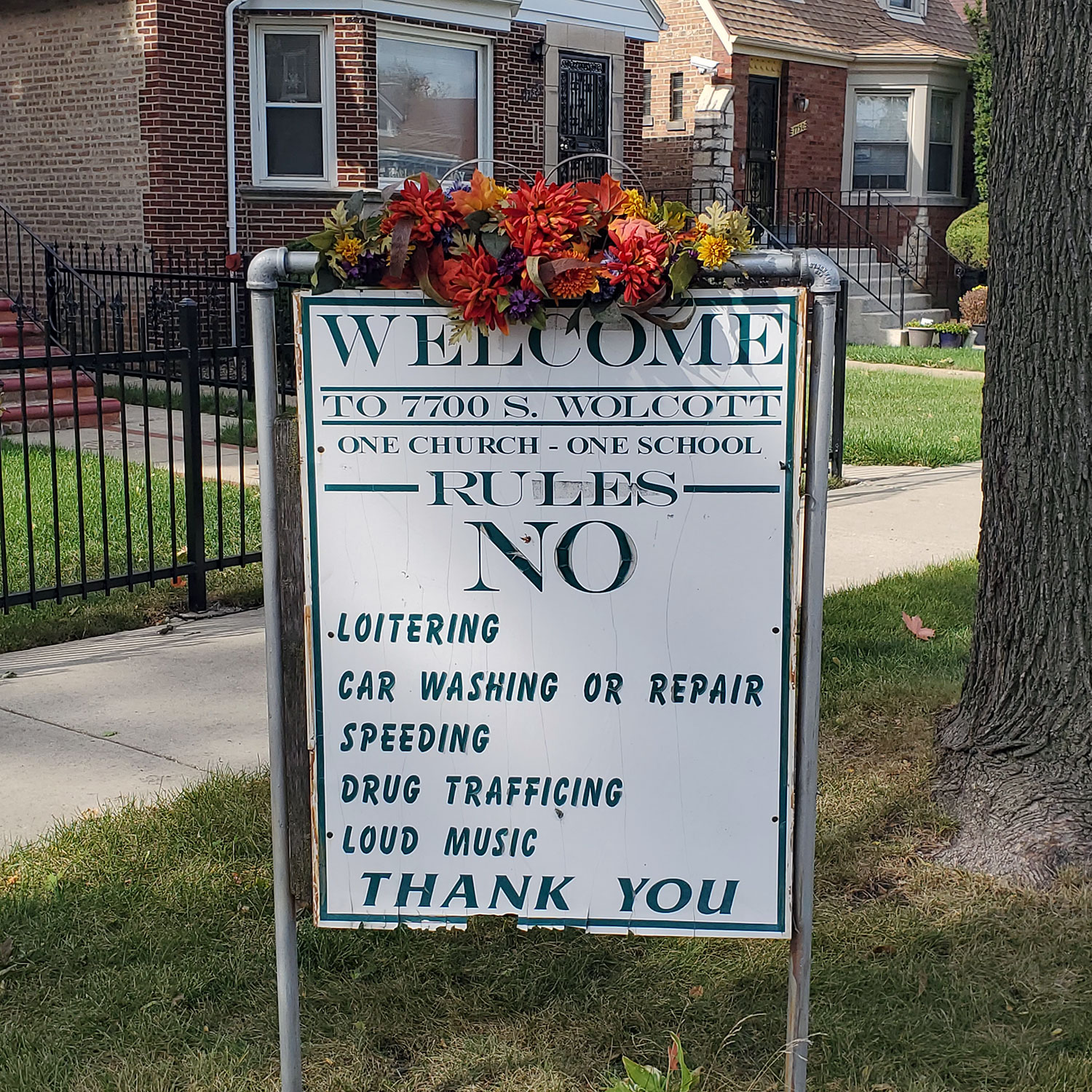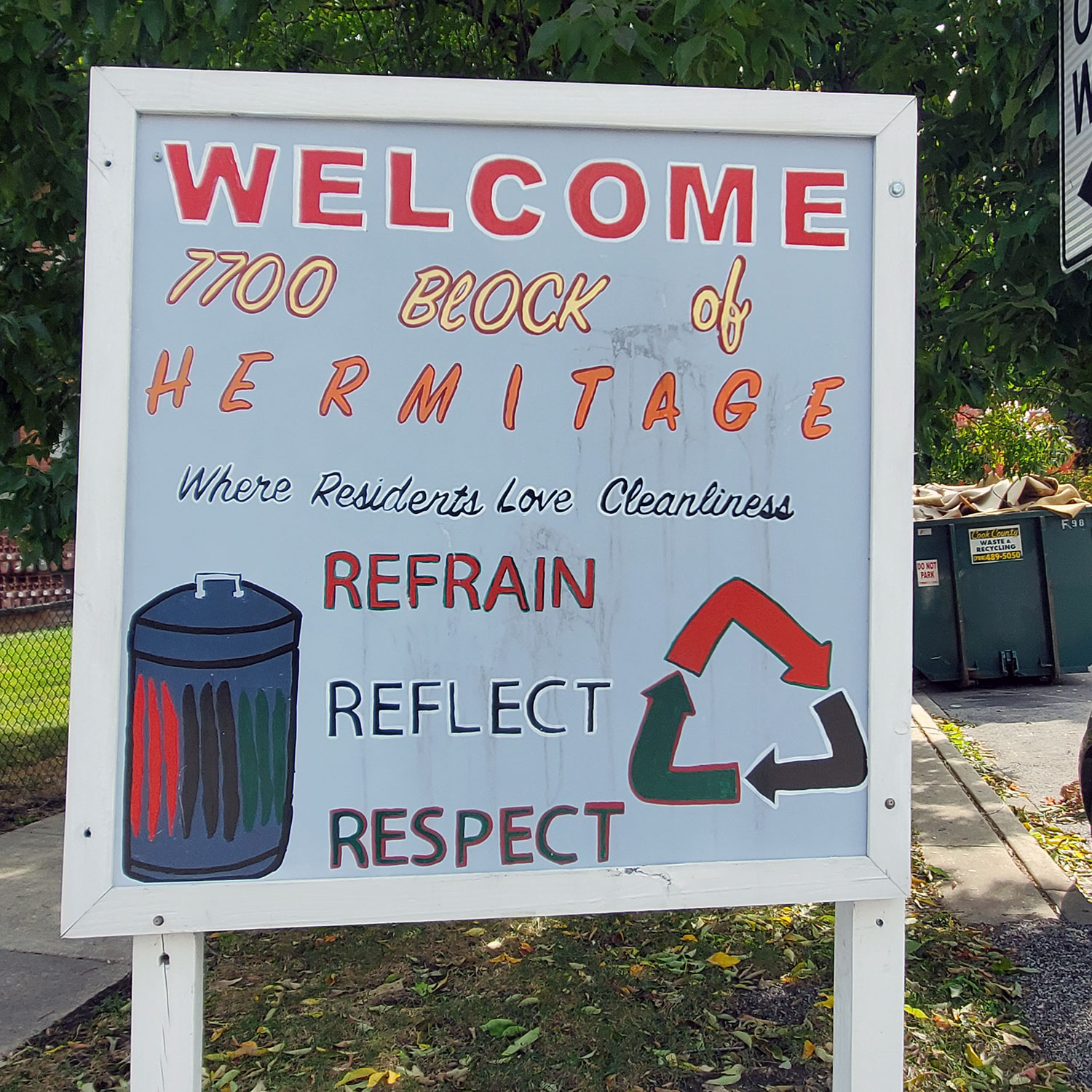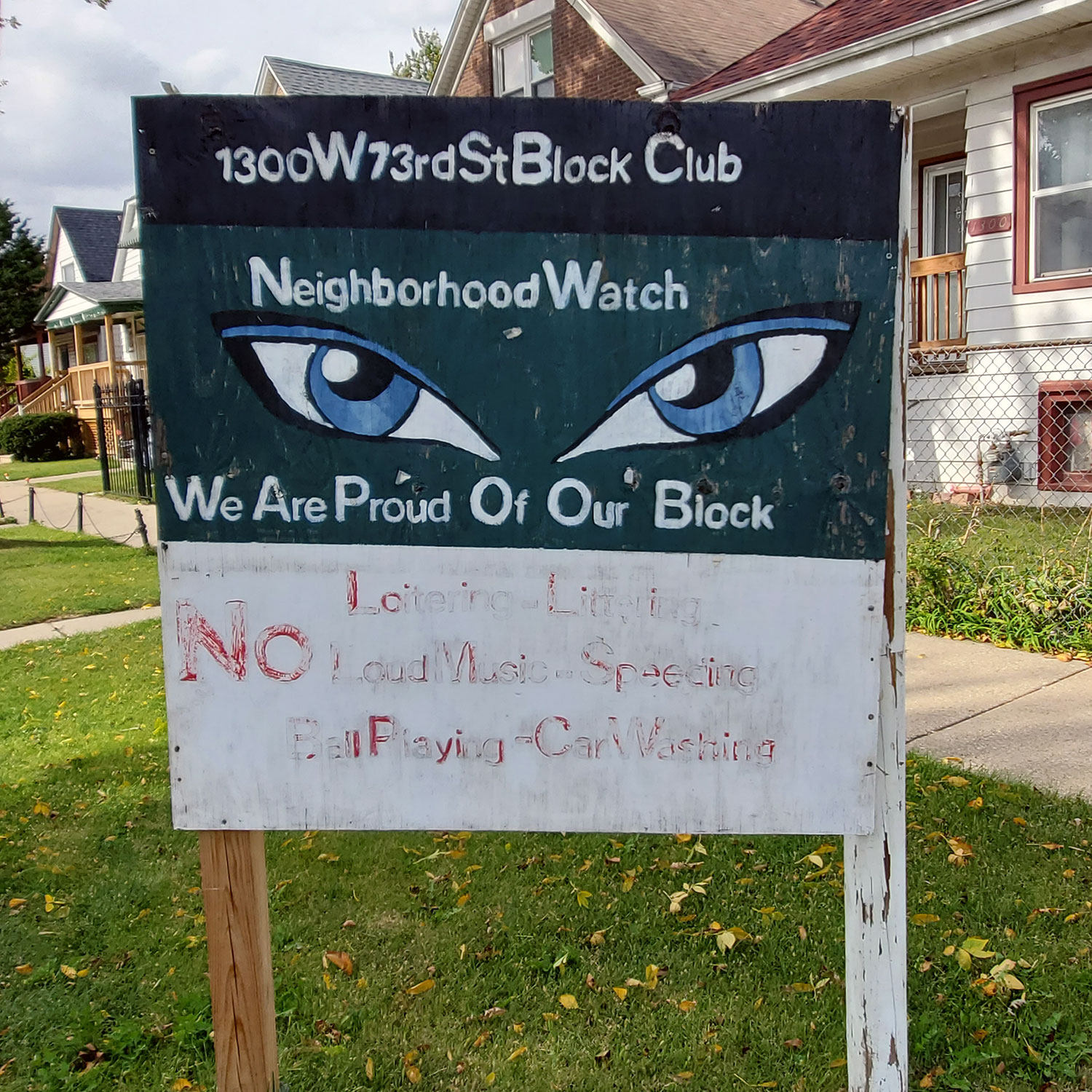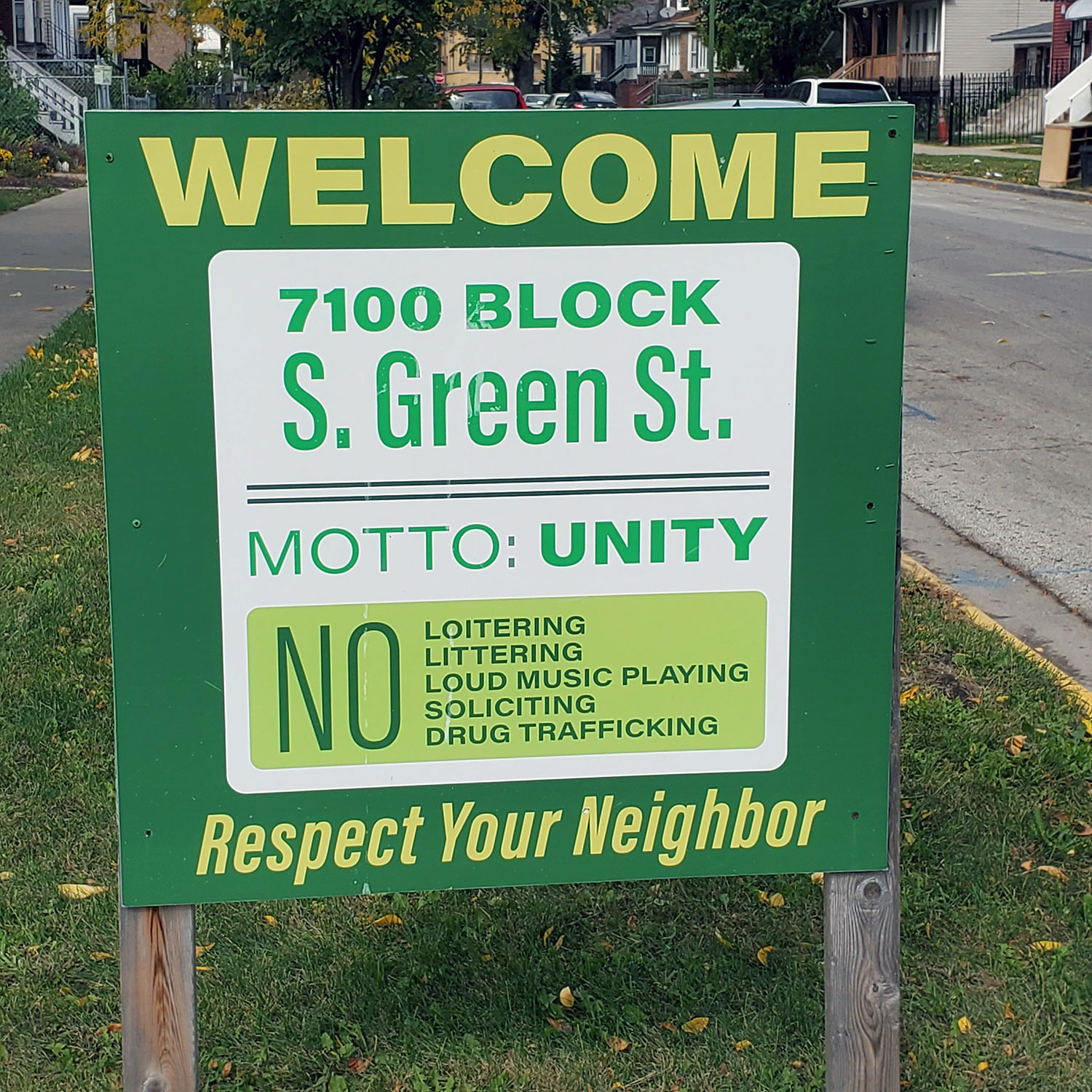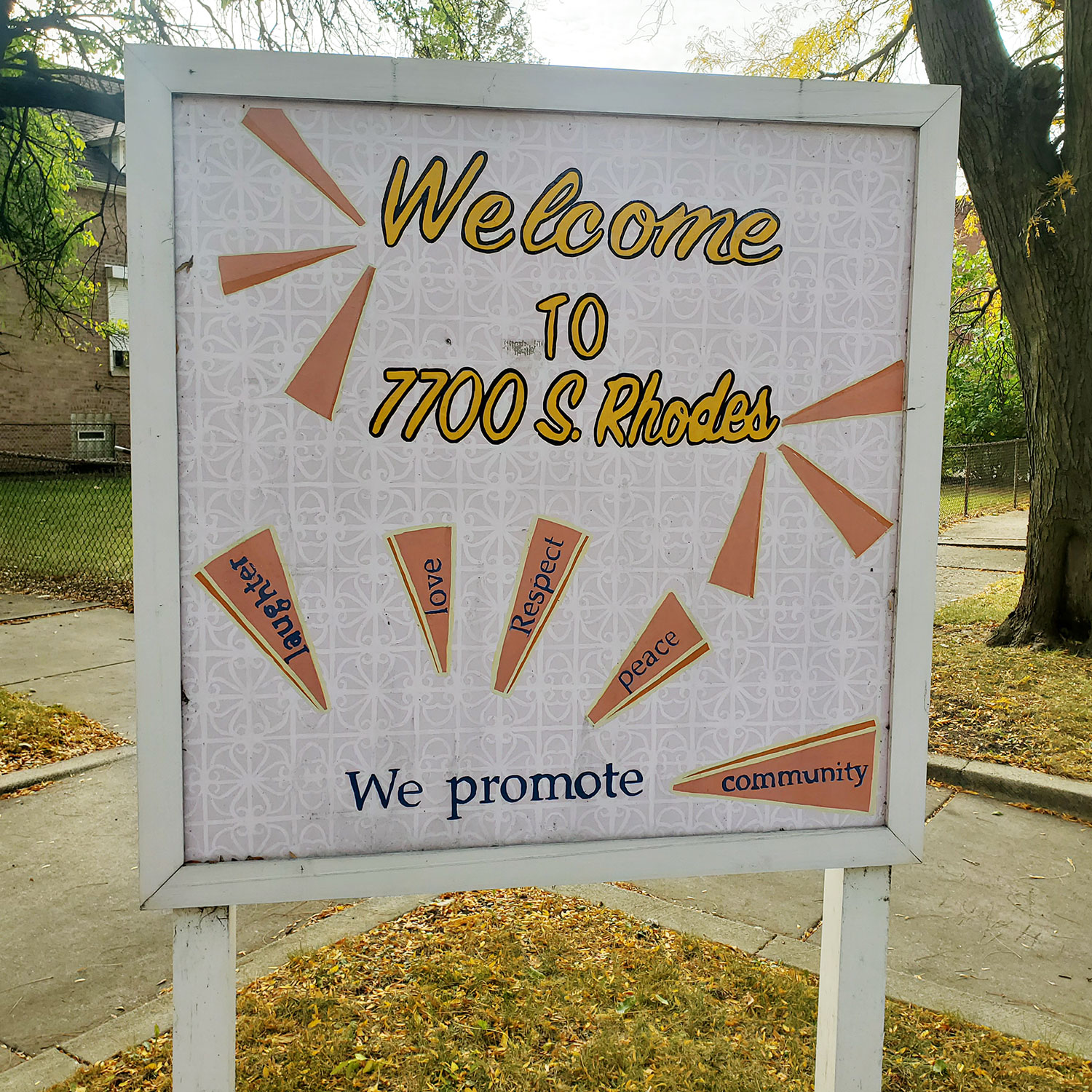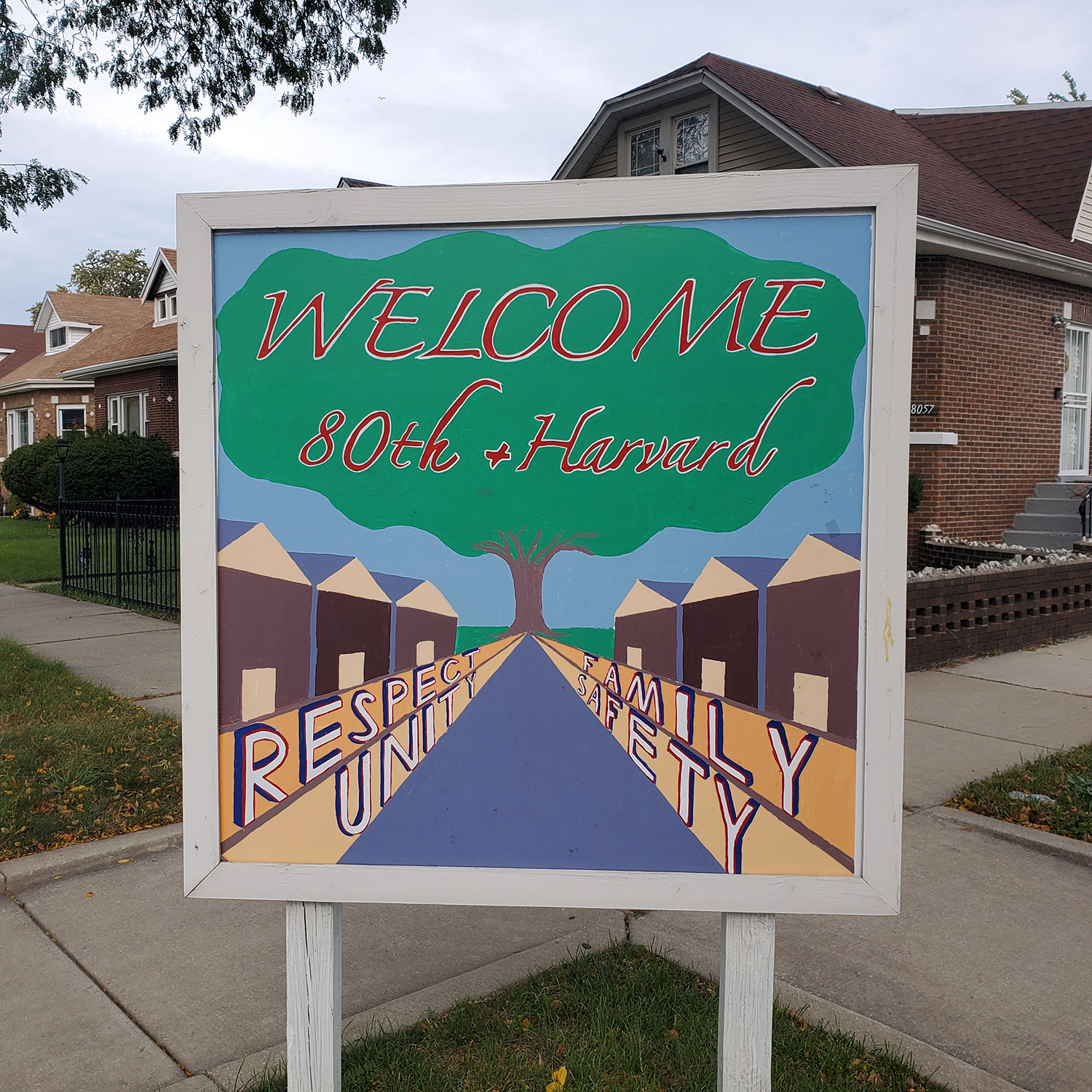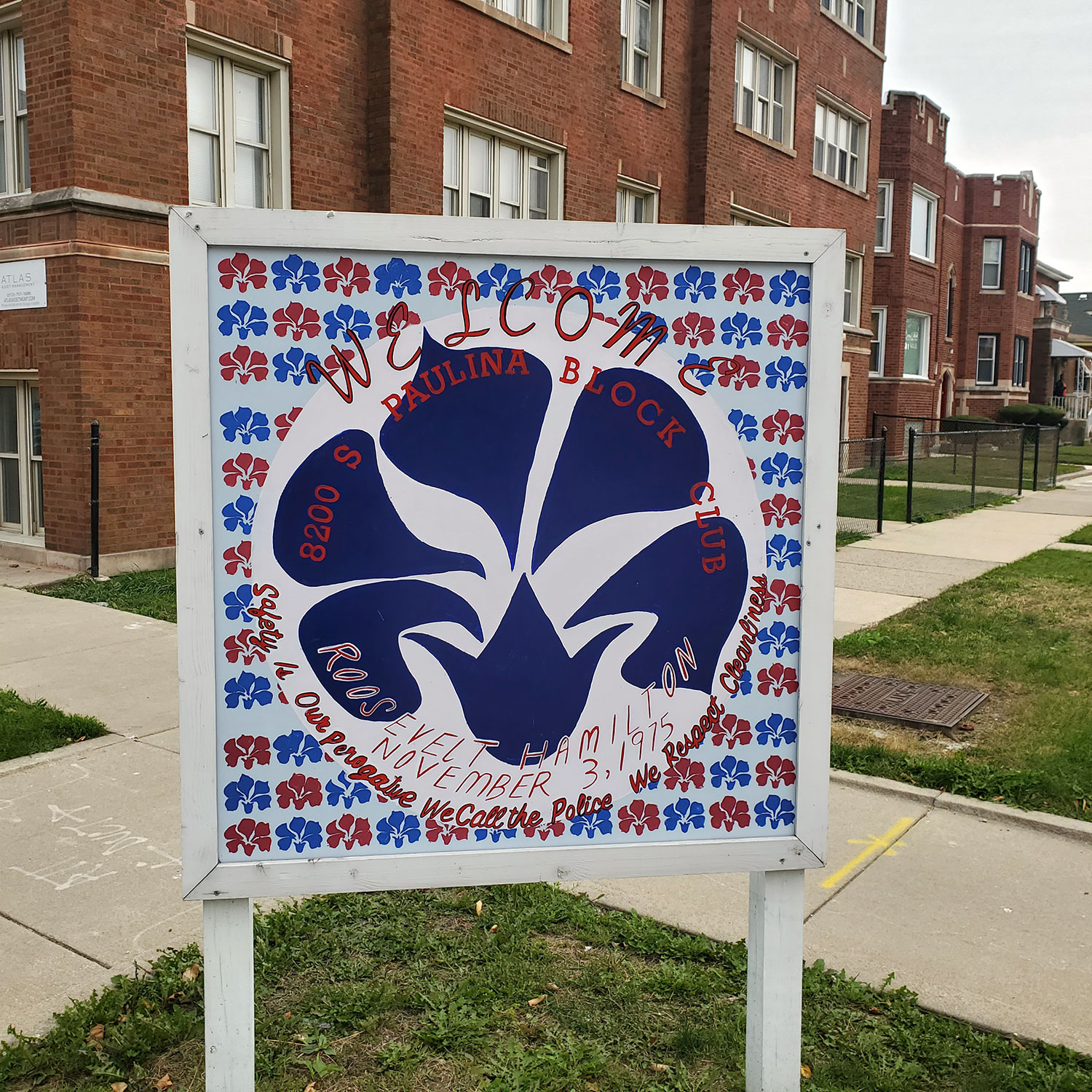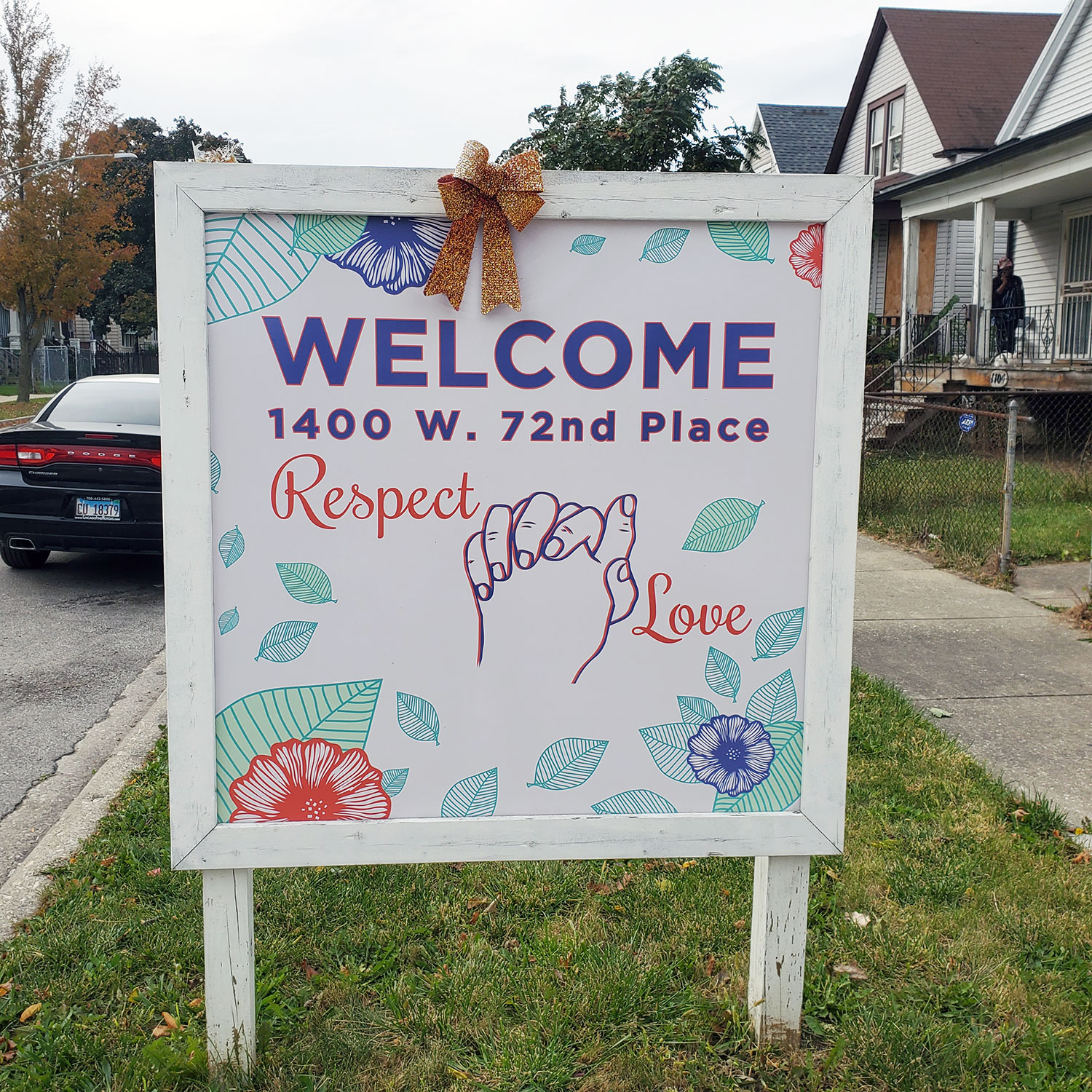The Block Club sign, which is found all over the South Side, but in few other places, is traditionally a list of Things You Shouldn’t Do in Our Neighborhood: no loitering, no car washing, no loud music, no ball playing, no gambling, no dogs nesting on lawns. Often, these warnings are accompanied by a painting of a pair of eyes, to let anyone thinking of doing any of those things know that someone is watching. According to the book Chicago’s Block Clubs: How Neighbors Shape the City, by Amanda I. Seligman, the signs were first erected as public declarations of rules spelled out in club newsletters.
“Placing signs in the public thoroughfare reinforced the idea that the rules applied to everyone, not just to block club members,” Seligman wrote. “Block club signs were usually homemade affairs, handpainted on wood and erected simply on pairs of wooden posts. One function of the signs was to notify passersby of a block club’s existence. The signs also set out simplified versions of the club’s expectations for public behavior on the block, typically condemning some combination of illegal drugs, loitering, gambling, unsafe driving, and car repair.”
Most of the older signs bear those admonitions. But there is a new tradition of block club signs. Jahmal Cole, a Chatham resident who founded My Block, My Hood, My City, has worked with the Design Apprenticeship Program at the University of Chicago Arts Incubator to encourage young people to paint more colorful, more positive, more welcoming signs — signs whose messages are not preceded by the word “NO.” On a recent trip through Greater Grand Crossing, Avalon Park, Chatham and Auburn-Gresham, we saw both signs that warned and signs that welcomed. Swipe through the gallery below to see a few examples.



